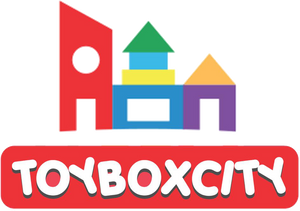Building Attention Span Through Play: What Parents Should Know
hildren today grow up surrounded by constant stimuli—screens, fast‑paced media, and busy schedules. For parents, one of the biggest challenges is helping kids develop the ability to focus, sustain attention, and regulate their concentration. Research in 2025 confirms that play is one of the most effective tools for building attention span in early childhood. Play is not just fun; it is a developmental necessity.
This article explores eight key areas parents should know about building attention span through play, blending current research with practical strategies.
1. Why Attention Span Matters in Early Childhood
Attention span is the foundation of learning. Without the ability to focus, children struggle with reading, problem‑solving, and social interactions.
-
Cognitive Development: Sustained attention supports memory formation and executive function.
-
Academic Readiness: Longer attention spans predict success in literacy and numeracy.
-
Social Skills: Focused play helps children listen, cooperate, and empathize.
Studies show that children aged 3–7 typically sustain attention for 5–20 minutes depending on the activity, but play can extend this capacity. Parents who nurture attention early give their children a strong advantage in school and beyond.
2. The Science of Play and Attention
Play activates multiple brain regions, strengthening neural connections that support focus.
-
Pretend Play: Enhances working memory and flexible thinking.
-
Rule‑Based Games: Teach self‑control and sustained concentration.
-
Exploratory Play: Builds curiosity and persistence.
Research from the Early Childhood Education Journal (2025) found that child‑initiated play leads to longer sustained attention than adult‑directed tasks. This means giving children choice in play activities is critical.
3. Structured vs. Unstructured Play
Both structured and unstructured play contribute to attention development.
-
Structured Play: Board games, puzzles, and building sets require rules and focus.
-
Unstructured Play: Free play with toys or outdoor exploration encourages creativity and self‑directed concentration.
-
Balanced Approach: Combining both types maximizes benefits.
Parents should avoid overscheduling and instead allow children time for open‑ended play, which fosters intrinsic motivation and longer attention spans.
4. Role of Parents in Guiding Play
Parents are facilitators, not directors, of play.
-
Modeling Focus: Demonstrating patience and concentration during play.
-
Encouraging Persistence: Praising effort rather than quick success.
-
Limiting Distractions: Creating play environments free from screens and noise.
Parental involvement enhances attention span by showing children that focus is valued and rewarding.
5. Types of Play That Build Attention
Certain play activities are especially effective in strengthening focus:
-
Puzzles and Logic Games: Improve problem‑solving and sustained effort.
-
Storytelling and Role Play: Require memory and sequencing.
-
Outdoor Exploration: Builds observational skills and patience.
-
Music and Rhythm Games: Enhance auditory attention and timing.
These activities challenge children to stay engaged, gradually extending their ability to concentrate.
6. Attention Span Challenges in the Digital Age
Screens can shorten attention spans if not managed carefully.
-
Fast‑Paced Media: Overstimulates the brain, reducing patience for slower tasks.
-
Passive Consumption: Limits active engagement and focus.
-
Balanced Use: Educational apps and interactive games can support attention when used in moderation.
Parents should set clear boundaries on screen time and prioritize hands‑on play to counteract digital distractions.
7. Play‑Based Strategies for Different Ages
Attention span grows with age, and play strategies should adapt accordingly:
-
Ages 3–4: Short, simple games with clear rules (matching, stacking).
-
Ages 5–6: More complex puzzles, role‑play scenarios, and cooperative games.
-
Age 7: Strategy board games, early coding toys, and creative projects requiring sustained effort.
Tailoring play ensures children are challenged but not overwhelmed, supporting gradual growth in focus.
8. Practical Tips for Parents
Parents can integrate play into daily routines to build attention:
-
Set Play Goals: Choose activities that require 10–15 minutes of focus.
-
Rotate Toys: Prevent boredom by introducing variety.
-
Encourage Reflection: Ask children to explain what they built or played.
-
Celebrate Effort: Reinforce persistence rather than speed.
These strategies help children see attention as a skill they can practice and improve.
Building attention span through play is one of the most effective strategies parents can use. Research in 2025 confirms that play‑based activities significantly enhance focus in children aged 3–7.


